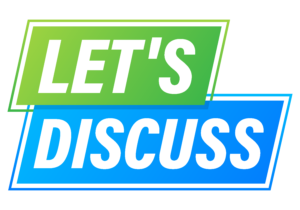Hey there, savvy marketer! Are you ready to turn those website visitors into engaged customers? Then it’s time to amp up your Calls to Action (CTAs). You see, a CTA is not just a button on your website; it’s a game-changer, a deal-sealer, and at Signal, we’re here to help you master the art of creating powerful Calls to Action that actually work.
What is a Call to Action?
In its simplest form, a Call to Action is an instruction aimed to provoke an immediate response. On a website, it can take the form of a clickable button, text, or image directing the user to take some kind of action, like “Buy Now,” “Subscribe,” or “Learn More.”
A Call to Action, commonly abbreviated as CTA, is not just some random button or a line of text you slap on your webpage. No, it’s way more strategic than that. It’s the grand finale to your marketing pitch, the final note in your brand’s song that nudges people into doing something—anything—that moves them deeper into your sales funnel.
Imagine it like this: You’re on a date, and things are going well. You’ve spent the evening getting to know each other, laughing, sharing stories and building rapport. Now it’s time to go home. What’s the next move? “Would you like to go out again?” That’s your real-world CTA right there! You’re asking for a next step, based on all the good vibes so far.
So, back to the digital realm. In essence, a CTA is an interactive element on your website or advertisement that encourages a potential customer to take a specific action that’s beneficial for your business. It’s the tipping point between a passive viewer and an active participant in your brand’s story. The action could be anything from signing up for a newsletter, downloading an eBook, purchasing a product, or sharing content on social media.
Why CTAs are a Must
Look, you’ve got precious seconds to capture a user’s attention. A compelling CTA can be the difference between a conversion and a bounce. It’s your digital sales pitch, and it needs to be spot-on.
CTAs are often presented as clickable buttons, but they can also be links, images, or even audio prompts. A well-placed CTA is the bridge between the content or value you’re providing and the action you want the visitor to take. It connects the dots for your visitor, guiding them on what to do next.
Now, you might think, “Well, if my content is good, won’t people take action anyway?” Not necessarily. We live in a world with the attention span of a goldfish (no offense to goldfish), so spelling out what you want the user to do can make a world of difference.
In short, if you’re not using CTAs, you’re essentially leaving it up to the user to figure out what they should do next. And let’s be real, in today’s fast-paced digital world, that’s not a bet most of us can afford to make.
The Art of Creating Powerful Calls to Action
Okay, now that we’ve demystified what a CTA is and why it’s the unsung hero of your marketing strategy, it’s time for the main event: creating your own knockout CTA. You might be thinking, “How hard can it be? It’s just a button, right?” But hold your horses! Crafting a CTA that’s not just functional but also irresistible is both an art and a science.
In this next section, we’re going to dig deep. We’ll uncover the psychology behind why certain words, colors, and placements make us click (literally!), and why others make us bounce faster than a rubber ball. From crafting killer copy and selecting eye-catching designs to the fine art of positioning, we’ve got the whole playbook coming up for you.
So, if you’ve ever wondered how to get more people to download your latest eBook, sign up for your killer webinar, or just smash that ‘Buy Now’ button like there’s no tomorrow, you’re in the right place. Let’s roll up those sleeves and explore the art and science of creating powerful calls to action in your marketing!
Choosing the Right Words
Ah, words—the building blocks of persuasion. The words you choose for your CTA are the context in which your potential customers make that critical decision—to click or not to click. So, let’s not leave it to guesswork, shall we?
Action-Oriented Verbs
The first step in crafting compelling text is to use action-oriented verbs. Think Buy, Download, Subscribe, or Learn. These verbs are prompts that direct the user on what to do next. They’re not just sitting there; they’re screaming, Hey, you! Do this!
Be Specific, Be Clear
Click Here is so 2005. In 2023, you need to give people a reason to click. Instead of generic language, go for specific, benefit-focused words. Try Get Your Free eBook Now or Start Your 30-day Free Trial. These phrases tell the user exactly what they’re getting when they click that button.
Create a Sense of Urgency
FOMO (Fear of Missing Out) isn’t just a buzzword; it’s a powerful psychological trigger. Adding words like Now, Today, or Limited Time can light a fire under your potential customer. Just don’t overdo it; you don’t want to come across as spammy.
Personalize It
In a world drowning in generic messages, personalization can make your CTA stand out. If possible, use smart CTAs that change based on the user’s behavior or demographic. Phrases like Show Me My Recommendations or Take Me to My Dashboard can significantly increase engagement.
Test, Test, Test
Here’s the kicker: What works in theory doesn’t always work in practice. A/B testing allows you to experiment with different phrases to see which ones are more effective. Swap out a word here, add an exclamation mark there, and measure how these tiny tweaks can result in significant conversion changes.
Choosing the right words for your CTA is akin to a chef selecting the perfect spices—it’s not about overwhelming the dish, but elevating it. Remember, your CTA is not just a button; it’s the gateway to a customer relationship. Make it count.
The Art of CTA Design: More Than Just a Pretty Button
Listen, a CTA is a lot like an Instagram post—content may be king, but aesthetics? That’s the queen. And if you’re striving for a royal flush in the game of conversions, you better pay attention to design as much as you do to the words. So, let’s dive into it, shall we?
Color Psychology
You may have the perfect words, but if your CTA blends in with the background, you’re fighting a losing battle. Color matters—big time. Use contrasting colors to make your button pop from the rest of the page. Red often signifies urgency, while green exudes calm and go-ahead. Test different color schemes to find what vibes best with your brand and audience.
Shape and Size
The shape and size of your button should be inviting, not intimidating. Rectangle with rounded corners is a classic, but don’t be afraid to experiment. Just keep mobile users in mind; your button should be easy to click regardless of the device. If it takes a microscope or a magnifying glass to find your CTA, you’re doing it wrong.
Visual Cues
Arrows, icons, or images can guide the eye towards your CTA. Think of these as your wingmen at a party, subtly directing attention where you want it to go. For instance, a small arrow pointing towards the button can be a neat little psychological trick to draw attention.
White Space
Don’t underestimate the power of breathing room. White space around your CTA can make it stand out and give it the importance it deserves. It tells your visitors, “Hey, focus here; this is important.”
Font and Typography
Your font style and size should be legible and harmonious with your website’s overall design. Ever tried reading cursive on a pixelated screen? Not fun. Keep it simple and make sure it’s easy to read.
Hover Effects
This one’s a neat trick. A subtle change when the mouse hovers over your CTA can signal interactivity. It’s like the button is saying, “Go ahead, click me. Let’s do this!”
Consistency is Key
Design consistency reinforces brand recognition. If you’ve designed a killer CTA, consider echoing its design elements in other marketing assets like your emails, social media buttons, or even offline materials.
The design of your CTA isn’t about slapping on some color and fun words; it’s an art and a science. And just like in art, critique (read: analytics and A/B tests) helps you refine your masterpiece. So play around, dare to innovate, but above all, keep your audience in mind. After all, a CTA that resonates is a CTA that converts.
Where to Place Your CTAs
Alright, so you’ve got your kick-butt, visually appealing, and downright irresistible CTA button designed to perfection. But where do you place it on your website or landing page? Trust me, location isn’t just critical in real estate; it’s equally vital when it comes to creating powerful Calls to Action.
Above the Fold
The classic, tried-and-true place for the most crucial CTA is above the fold. That’s the area a visitor sees without scrolling. This prime real estate is where you grab ’em and say, “This is what you’re looking for.”
Within the Content
If you have a blog or an article, strategically placing CTAs within the content can be gold. You’ve got them interested, now direct that interest to a click. You could weave it into the narrative, but remember, it has to make sense contextually. Don’t just shove it in; integrate it.
The End of Content
So your visitors have reached the end of your blog or the bottom of your product page. Now what? This is where you swoop in with another CTA. They’re warmed up; they’ve invested time reading your content. Capitalize on that commitment.
Sticky CTA
Some websites feature a sticky CTA that scrolls down with you. These are particularly useful when your landing page or article is a long read. It’s like a friendly nudge that says, “Hey, whenever you’re ready to make that decision, I’m right here.”
Pop-ups and Exit Intents
Love ’em or hate ’em, they work. Pop-up CTAs appear after a certain amount of time or page scroll, while exit-intent CTAs show up when the user is about to leave the page. Use these sparingly; you don’t want to annoy your visitors.
Sidebars and Footers
The sidebar can be an excellent place for a secondary CTA or even a series of smaller CTAs. They’re not in the reader’s direct line of sight, but they’re accessible. And don’t neglect the footer; it’s often where people look for additional options and next steps.
Micro-CTAs
These are subtle calls to action you can place in header menus, subheadings, or even within other CTAs as a secondary option. For example, below a “Buy Now” button, you might place a less committing micro-CTA like, “Learn More.”
Remember, people aren’t robots programmed to click your CTAs. So, think like a user when deciding on placement. Run A/B tests to find the sweet spots on your pages, and for the love of conversions, make sure your CTAs are mobile-friendly. Your CTA might be perfect, but if it’s hiding in the shadows, it’s not doing you any favors. Put that beauty center stage where it belongs!
Let’s Make it Click!
Listen up: It’s time to stop letting those potential conversions slip through your fingers. Start creating powerful Calls to Action that resonate with your audience and watch your engagement rates skyrocket. And if you want expert assistance to make your CTAs truly unforgettable, you know who to call. That’s right, Signal’s got your back! 🚀
Let’s set up a meeting!
(See, that’s a good CTA, right?)





